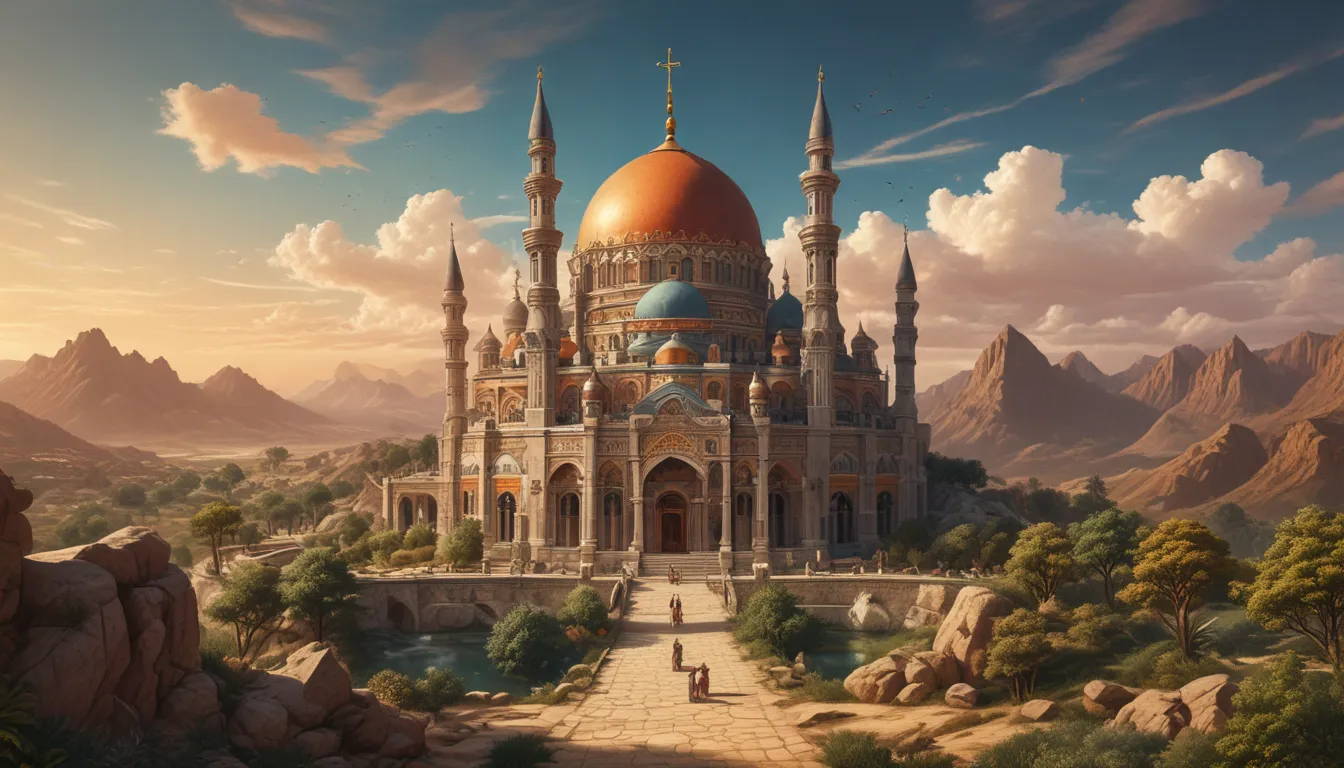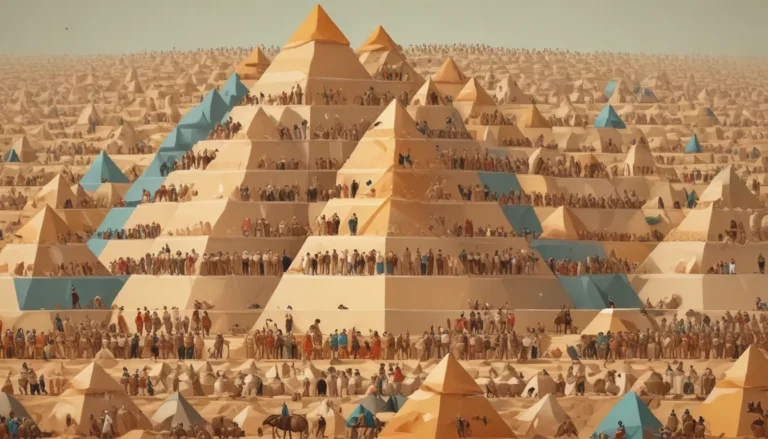A Note About Images: The images used in our articles are for illustration purposes only and may not exactly match the content. They are meant to engage readers, but the text should be relied upon for accurate information.
Religion has always been a powerful force in shaping societies and influencing the geographical distribution of populations worldwide. From ancient civilizations to modern times, religious beliefs have played a pivotal role in defining cultural practices, political boundaries, and societal norms. Delving into the world of religious geography grants us a unique perspective on the history, values, and social dynamics of different regions. In this article, we will embark on a journey to uncover 12 captivating facts about religious geography, showcasing the diverse beliefs and practices that adorn our global landscape.
Unveiling the Unique Intersection of Faith and Location
Religious geography unveils the intricate connections between faith and location, offering insights into the smallest independent state in the world and the holiest cities revered by major religions. Let’s unravel the birthplaces of religions, iconic pilgrimage sites, and the profound impact of geography on the tapestry of diverse faiths and cultural landscapes.
The Vatican City: A Spiritual Enclave
Nestled within the city of Rome, the Vatican City stands as the spiritual and administrative hub of the Roman Catholic Church. With a mere area of 44 hectares (110 acres), it holds the distinction of being the smallest recognized independent state on Earth.
Mecca: The Heart of Islam
Mecca, situated in Saudi Arabia, serves as the birthplace of Prophet Muhammad and the holiest city in Islam. Millions of Muslims worldwide converge here annually to undertake the Hajj pilgrimage, solidifying Mecca’s position as a central pillar of Islamic worship.
Varanasi: A Timeless Spiritual Haven
Perched on the banks of the revered Ganges River in India, Varanasi stands as the oldest continuously inhabited city in the world for over 2,500 years. Its ancient temples, ghats, and rituals magnetize pilgrims and visitors, encapsulating a vibrant cultural mosaic.
Jerusalem: A Triad of Sacredness
Jerusalem, with its millennia-old history, serves as a holy city for Judaism, Christianity, and Islam. Revered sites like the Western Wall, Church of the Holy Sepulchre, and Al-Aqsa Mosque embody the spiritual tapestry that draws devotees and travelers from across the globe.
Buddhism: A Journey from Nepal
The roots of Buddhism trace back to present-day Nepal, where Siddhartha Gautama, later known as Buddha, was born in the 6th century BCE. This spiritual doctrine then spread across Asia, shaping the cultural and religious landscapes of nations like India, China, Japan, and Thailand.
Hinduism: A Global Faith
With over a billion adherents, Hinduism ranks as the third-largest religion globally, predominantly practiced in India and Nepal. Through migration and cultural exchange, its influence has permeated various corners of the world, fostering a rich tapestry of beliefs and practices.
The Magnificent Great Mosque of Mecca
The Masjid al-Haram, known as the Great Mosque of Mecca, stands as the largest mosque globally, enveloping the Kaaba – Islam’s most sacred site. Its architectural grandeur can accommodate an astounding two million worshippers during the Hajj pilgrimage, a testament to its spiritual significance.
Christianity’s Panoramic Influence
Christianity’s ubiquitous influence stems from centuries of exploration, colonization, and missionary endeavors. As the world’s largest religion, it spans across all continents, embedding itself deeply within diverse cultures and societies.
The Purifying Waters of the Ganges
The revered Ganges River, flowing through India and Bangladesh, holds profound spiritual significance in Hinduism. Believed to cleanse the soul and absolve sins, a sacred dip in its waters resonates with believers seeking spiritual renewal.
Tibet: The Sanctum of Tibetan Buddhism
Dubbed as the “Roof of the World,” Tibet dazzles with its sublime landscapes and cultural heritage, serving as a sanctuary for Tibetan Buddhism. Enshrined by magnificent monasteries like the Potala Palace, it beckons pilgrims and wanderers in search of enlightenment.
The Wailing Wall: A Testament to Jewish Faith
The Western Wall, also known as the Wailing Wall, stands as the holiest site for Jewish prayer. Preserving the last remnants of the ancient Jewish temple complex, it carries profound religious and historical significance for the Jewish community.
The Flourishing Growth of Islam
With an estimated 1.8 billion followers, Islam emerges as the fastest-growing religion globally. Fueled by high birth rates in Muslim-majority regions and conversions worldwide, its expansion underscores the evolving religious landscape of our interconnected world.
Illuminating the Interplay of Religion and Geography
These 12 enthralling facts illuminate the intricate relationship between religion and geography, from the ancient cradles of faith to the revered pilgrimage sites. By exploring religious geography, we gain deeper insights into how faith shapes and influences our world in myriad ways.
Embracing the Diversity of Religious Beliefs
Religious geography offers a captivating lens through which we can appreciate the rich tapestry of religious beliefs and customs that adorn our global society. By nurturing interfaith understanding and cultural awareness, we move towards fostering dialogue and respect among diverse faith traditions.
FAQs: Navigating the Realm of Religious Geography
-
What is religious geography?
Religious geography delves into the spatial distribution of religious beliefs, practices, and traditions worldwide, exploring how geography influences the formation and expression of diverse religions. -
How does geography impact religious practices?
Geography shapes religious practices by influencing resource availability, worship environments, and cultural contexts in which rituals and traditions unfold. -
Can religious geography foster interfaith understanding?
Yes, studying religious geography promotes interfaith understanding by shedding light on the diverse religious beliefs and practices across cultures, fostering dialogue and empathy among different faith traditions. -
How does religious geography promote cultural awareness?
Religious geography enhances cultural awareness by highlighting the interplay between religion, culture, and geography, fostering appreciation and respect for the diversity of religious beliefs worldwide.
Striving for Knowledge and Understanding
As we voyage through the realms of religious geography, we uncover a myriad of cultural treasures that enrich our understanding of the world’s diverse faith traditions. By embracing the complexities of religious dynamics, we forge a path towards mutual respect, dialogue, and unity across the vibrant mosaic of global spirituality. Let us continue to explore, learn, and celebrate the beauty of religious diversity that adorns our shared humanity.






